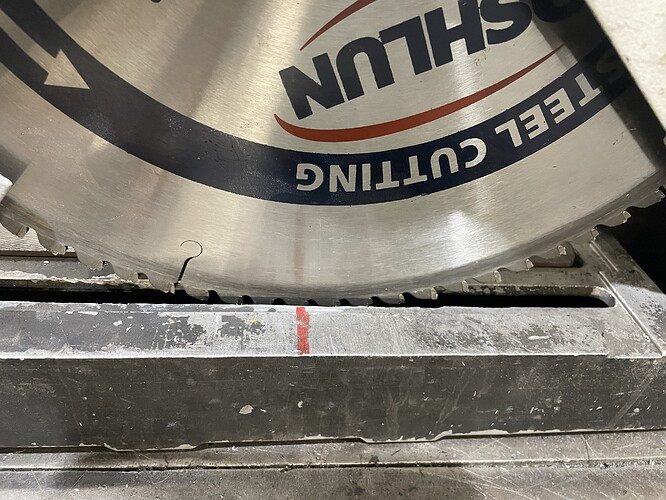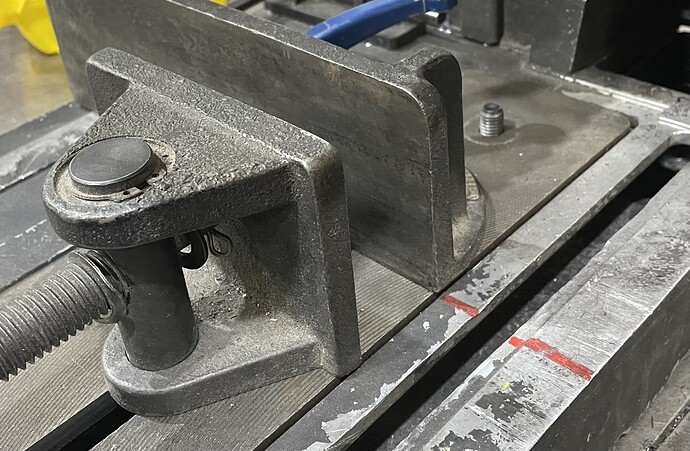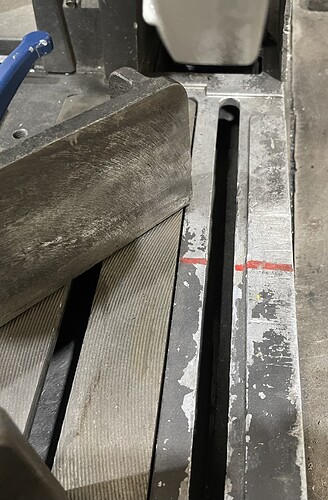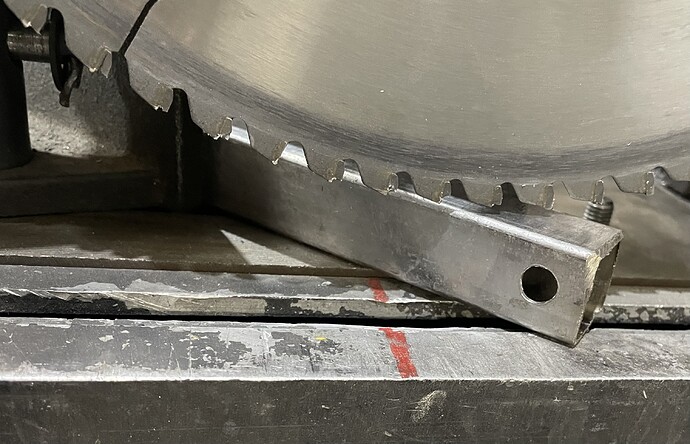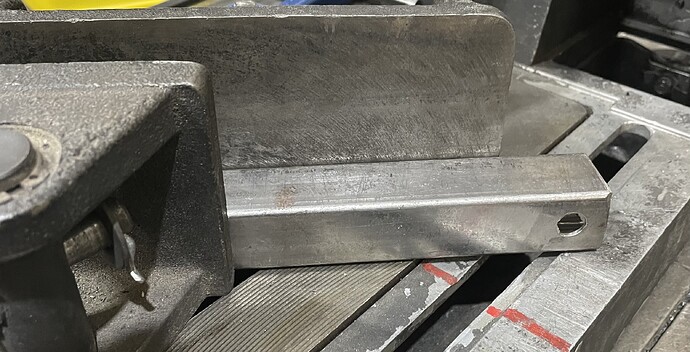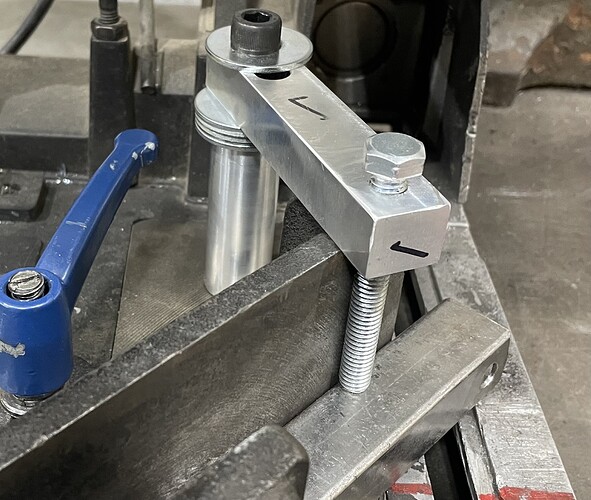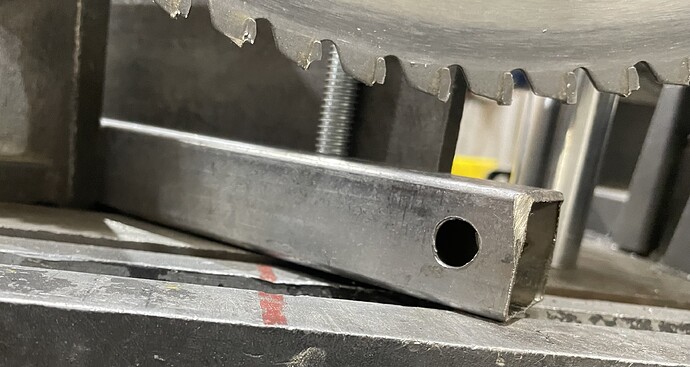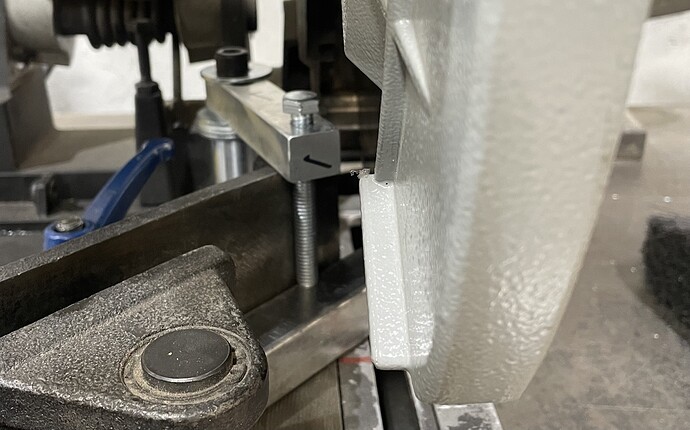We recently had a minor accident with the Evolution Chop Saw during a Metal Shop Safety class. No one was hurt, but the metal blade guard was literally ripped apart. It was definitely not the student’s fault; it instead revealed an issue that we the MSS instructors had overlooked. @JoeN pointed this out to us.
While the chop saw is fine with straight cuts, we have been teaching that this is the preferred saw for angled/miter cuts. This remains true – the other saws cannot perform them at all with any accuracy – but there are additional considerations then.
Consider the blade when it is cutting. The red line I painted on the base is at the center of the saw when it is lowered, where the blade is lowest.
In front of that line, while cutting, the blade is pushing down against the base as well as back. Behind that line, the blade will be pulling up on the piece. That upward force poses a risk of pulling the piece up despite the clamp. Once the piece starts to angle up, it will bind up on the blade even more, a dangerous event. That is what happened during the MSS class accident.
When performing a straight cut, the fence is right on that line, keeping the piece entirely forward of it, where it is safer to cut.
But when performing an angled cut, the piece is well behind that point.
In addition, the rotation of the clamp then means the front section of the piece is not firmly gripped, allowing it to be pulled up even more easily.
Joe said he solved this problem with his own saw using a C-clamp on the front, but particular features on our base make that difficult to do here.
So I’ve made a small clamp add-on that will make certain a piece stays down despite the upward forces on it.
This is essentially a proof-of-concept that will be refined over time, but it works. The piece cannot move upward in the slightest.
However, when using it, you will have to be certain that it does not interfere with the saw blade or body. There are multiple lengths of the clamp bolt available to accommodate different height pieces.
So while it should make angled cuts much safer, it should probably be removed for straight cuts. The post simply unscrews from the base; the horizontal piece is secured with a bolt that uses the same Allen wrench that is secured to the base.
Let me know if you have any comments or concerns.
